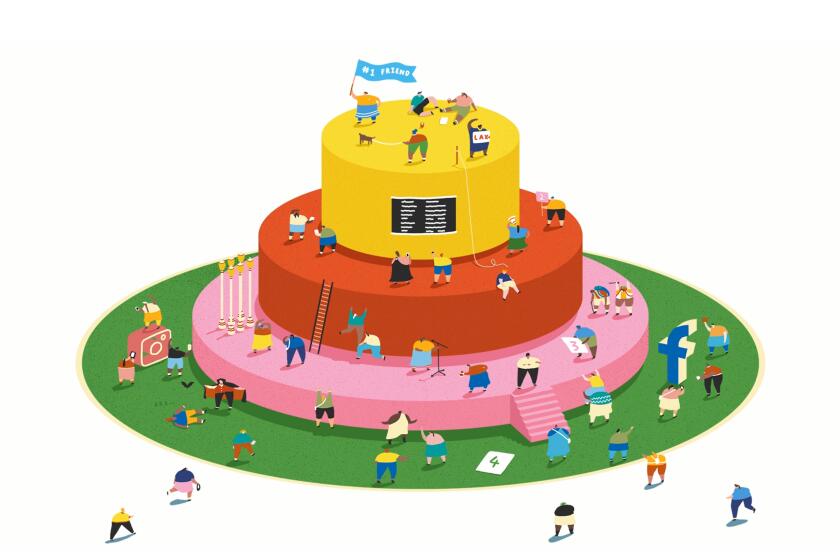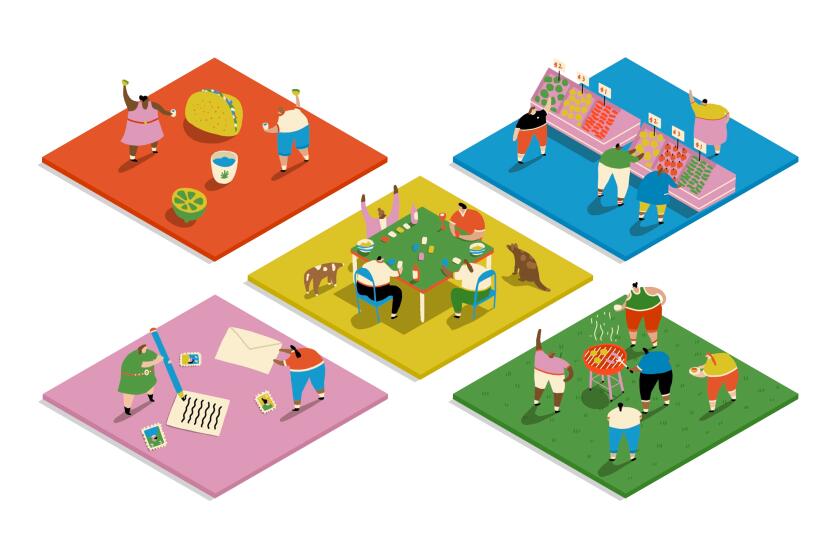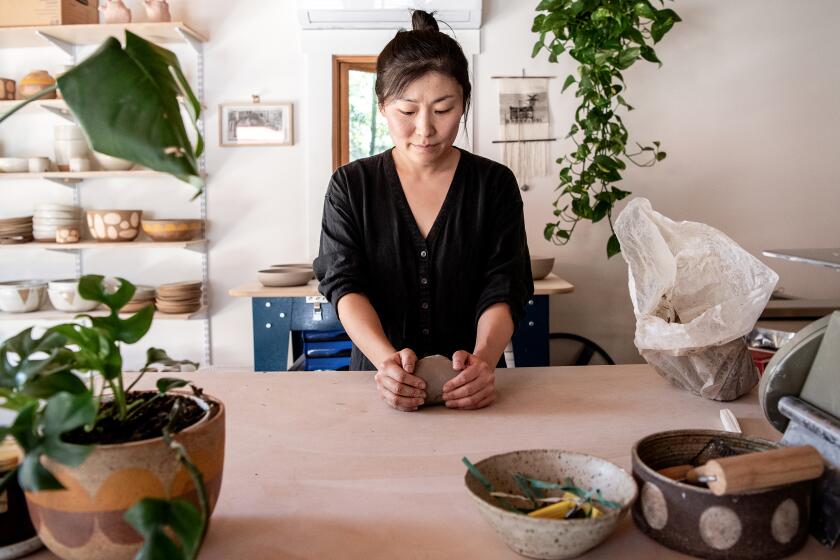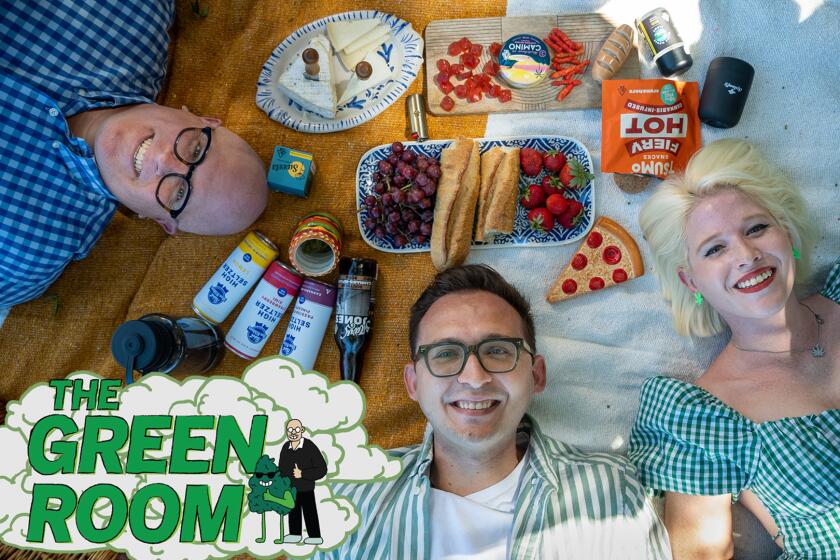In the classic TV sitcom “Seinfeld,” the boundary-violating friendship is played for laughs. When across-the-hall neighbor Kramer, practically the patron saint of overstepped boundaries, forages fridges, borrows clothes or barrels uninvited into Jerry’s apartment, it’s comedy gold. In real life, though, setting boundaries with friends is no laughing matter.
That has a lot to do with the less rigid, more free-form nature of the nonmarital, nonfamilial friend relationship itself. Bright-line no-fly zones are harder to set and maintain when expectations and boundaries vary wildly from friendship to friendship, and doubly so when they shift over time within the same friendship. (It’s a lesson many of us learned through the last two years of polarizing politics and the COVID-19 pandemic.)
As daunting as it can seem, learning how to successfully set clear boundaries with your friends is important for two big reasons. First — and this may seem counterintuitive — it makes you a better friend.
“Everyone thinks, ‘Oh, a boundary means me setting limits, creating distance,’” says Beverly Grove-based psychotherapist Allison Perks. “Actually, boundaries are the best way to create closeness and connection. When you communicate clearly and directly with friends about what’s OK and what isn’t, you know the lay of the land with them so you can behave in a way that creates trust in the friendship … [and] so you can feel trusting of them in the relationship.”
Friendship in L.A.
This story is part of a series exploring how we connect in a sprawling metropolis.
Second, as James Guay, a West Hollywood-based therapist points out, these low-impact, more casual bonds also serve as training wheels for some of those big, higher-stakes relationships. “[Friendships] are sometimes the most consistent relationships of our lives, and they are fertile ground for learning how to be in more sexual, romantic relationships,” he says. “They’re good practice.”
Armed with the knowledge that mastering these boundary-setting skills will make you a better friend now and a better partner later, your next step might seem clear: Grab that boundary-violating bestie by the hand and book an hour with a couples counselor, right?
The reality is that’s about as likely to happen as a Jerry-and-Kramer-share-a-shrink “Seinfeld” plotline (although given the series’ finale, it might’ve fit perfectly into a 10th season, am I right?). Therefore, we’ve sought solid, actionable boundary-setting advice from Perks, Guay and therapist Reshana Watson, whose L.A.-area practices focus on relationship counseling. Their takeaway? The path to better boundaries — and better friendships — begins with three simple steps: communicating, compromising and reevaluating.
1. Communicate (early)
Good communication is a no-brainer in any relationship, and Perks says the best approach is to start that boundary-setting conversation as early as possible — and definitely before things start to go pear-shaped. She offers the scenario of an upcoming dinner party.
“You’ve mentioned to your friend that you’re having some friends and family over for dinner, and they say, ‘Oh, I’d love to come. What time is it?’ You can say, ‘You know, for this gathering, I’ve already decided on the mix of people that are going to be here. I care about you as a friend, but this is not an event that you’re invited to.’ Be clear and direct about what you need. You are not responsible for how they feel and how they respond.”
Responsibility aside, Perks says there’s always room in the friend dynamic for empathy. “If you think your friend’s feelings will be hurt, you can say, ‘This might sound hurtful to you, but I want to explain that you are a friend that I enjoy being around and you’re important to me, but this is what I want for this one event.’”
Watson says there’s value in starting the conversation even if you don’t immediately have the right words at the tip of your tongue. “One of the most important things is the delivery and the way you speak to your friend,” she says. “You have your own particular language [between you] — that’s the reason why you‘re friends — so use that. ... It’s OK to just say, ‘You know, that was really weird. Can we talk about it?’ Or ‘I don’t really know what I was feeling, but that was different, right?’”
After managing grief, anxiety and depression, video game designer Ana Cho turned to pottery and woodworking to sustain her.
If you’re looking for a practical DIY guide to healthy boundary-setting, Watson recommends Nedra Glover Tawwab’s book “Set Boundaries, Find Peace: A Guide to Reclaiming Yourself.”
It’s also helpful, Guay says, if the boundary-setting request is framed as nonconfrontational. “We get to ask for what we need, not make demands,” he says. “It’s based on the concept of nonviolent communication — NVC — and it’s all about stating the facts and not the interpretation of the facts. Instead of labeling someone else’s behavior by saying, ‘You’re too needy,’ or ‘You’re too distant,’ you state the facts and what feelings [those facts] evoke in you. You’re taking personal responsibility for your reaction.”
2. Compromise (sometimes)
Sometimes, even after the lines of communication are fully open and completely static-free, getting a boundary set in a way that preserves the friendship means compromising. Guay gives the example of two friends with very different takes on touching base.
“The problem can be as simple as how quickly — or how thoroughly — someone responds to a text or an email,” he says. “On one side, there’s someone who wants to be a daily friend with daily texts, phone calls or interactions. On the other is someone who thinks once a week or even every other week works better. A lot of times it’s about naming the need, with one person saying, ‘This is what I’d like,’ and then the other person saying, ‘And this is what I’d like.’ Then it’s, ‘How do we bridge the gap?’ and ‘Is that even possible?’
Sometimes we each have to give up exactly what we want in order to bridge the gap and come closer to the middle — if it’s at all possible.
— Therapist James Guay
“Sometimes we each have to give up exactly what we want in order to bridge the gap and come closer to the middle — if it’s at all possible,” he adds. “Sometimes it’s not. Compromise is a huge area of growth for people, where you don’t get all of our needs met all the time in order to give to the friendship.”
In addressing the above scenario, Guay again emphasizes sticking to the facts. “Start the conversation with something like, ‘Hey, I noticed that you reach out to me three times a day. It may seem relatively insignificant for you because it’s just a text, but I’m noticing that for me what’s going to work better is having a more quality interaction once a week [instead].’ Then you’re not labeling the behavior. You’re just [noting that] what each of you want just isn’t lining up. And you can negotiate from there.”
3. Reevaluate (always)
Because the scope and strength of our friendships change as we move through life, Watson says we shouldn’t expect the boundaries we set to be as immutable as the borders between countries. “There are different levels of friendship,” she says. “And there’s an opportunity for promotion or demotion between those levels. For example, there’s the friend you can depend on to take you to the airport and the go-out-and-grab-drinks friend. There will be times when the airport friend gets demoted to the drinks friend level. That’s not necessarily a negative thing. It’s just that things don’t align anymore.”
With some careful strategizing, it’s possible to experience the city in exciting ways while staying on a budget.
Watson says it’s during times of transition — one friend entering a long-term relationship, for example — that revisiting set boundaries and managing expectations is key. “We want to be consistent with our boundaries, but if you’ve grown out of that boundary or the reason you set it in the first place no longer exists, you can change the boundary,” she says. “You just have to let the people around you know. The biggest thing with boundaries is the consistency and making it known what your boundary is, because even though you may have been friends for a long time, they can’t read your mind.”
With that in mind, what advice would Watson have for two longtime friends who reconnect in person post-pandemic only to discover their opinions on politics or vaccinations are at opposite ends of the spectrum?
You can’t hold on too tightly to the way things were before because we’re forever evolving.
— Therapist Reshana Watson
“I think you kind of have to be open to letting go of the expectations you had,” she says. “People are moving in different ways than they were before the pandemic. You can’t hold on too tightly to the way things were before because we’re forever evolving.”
Perks says boundary issues arise when we discuss hot-button issues such as politics or vaccine mandates because of how we approach the interaction. “What we’re trying to do is convince other people what they should think or how they should feel about something,” she says, “instead of just recognizing that you can’t control their political viewpoints. All you can control is how you respond and react to the conversation. We need to focus on ourselves because that’s really where we have power.”
From infused sodas to stealth pipes, here are five helpful hints from That High Couple for that next sesh on the grass.
If you genuinely want to keep the friendship but not the newfound political divisiveness, Perks suggests — you guessed it — communicating. “Can you have a conversation with this friend and say, ‘We have to agree to disagree because we go around in circles when we talk about politics? Can we hang out and not discuss politics since it doesn’t serve us? Because otherwise I think we have a great time with each other.’
“If they say, ‘No, in order for me to be your friend, I have to be able to talk about politics with you,’ then you have a choice to make,” she says. “Is this someone that you want to spend time with or do you not? The choice always comes back to us.”
More to Read
Sign up for This Evening's Big Stories
Catch up on the day with the 7 biggest L.A. Times stories in your inbox every weekday evening.
You may occasionally receive promotional content from the Los Angeles Times.



















